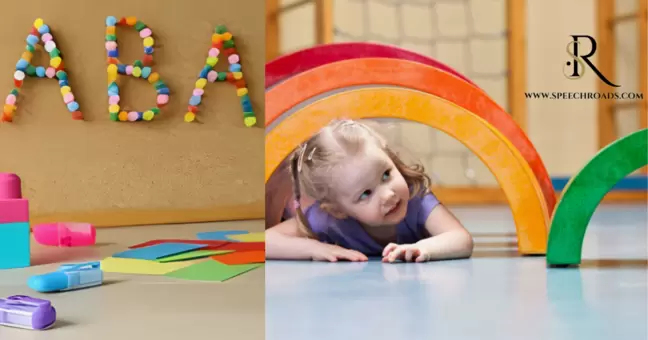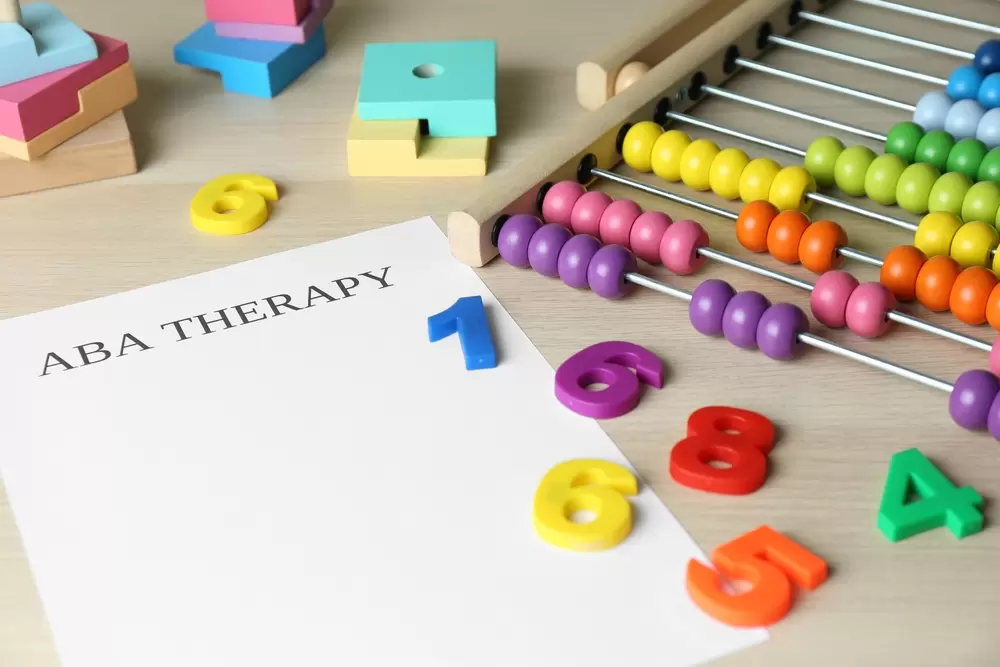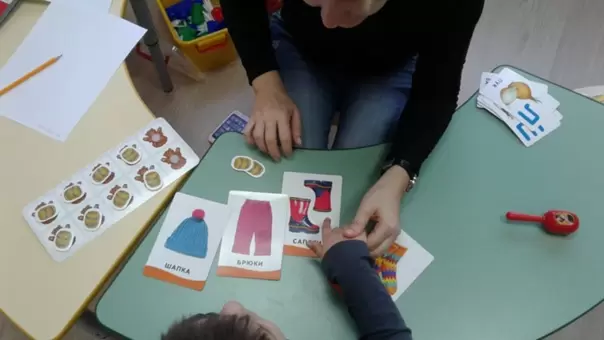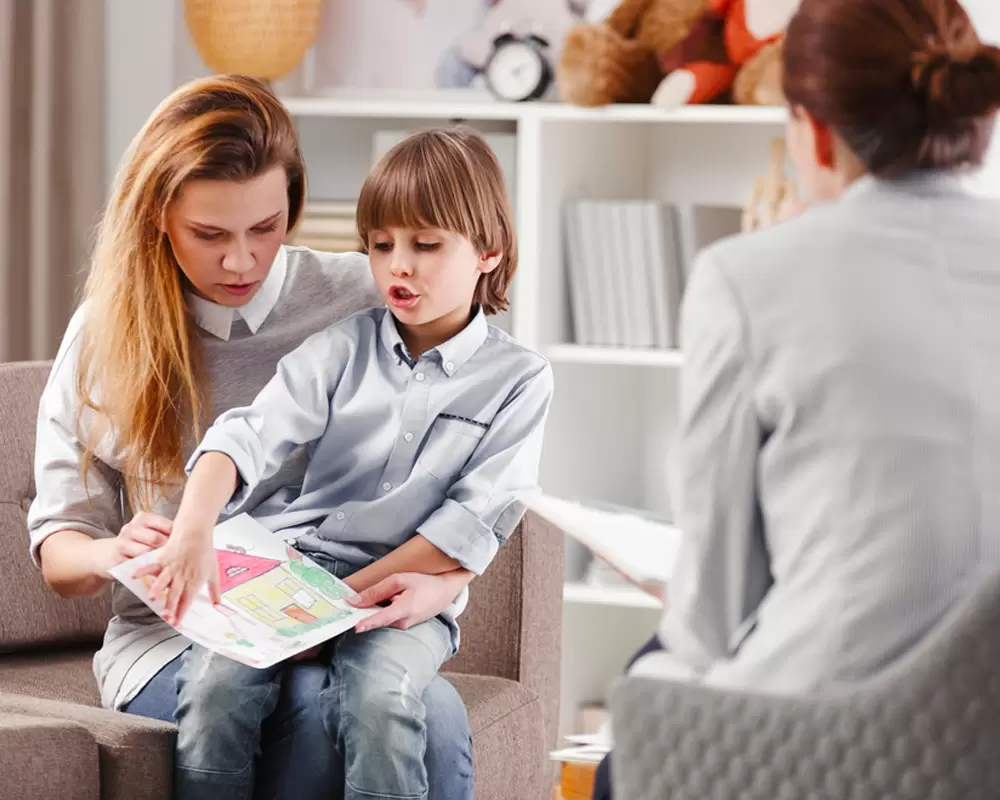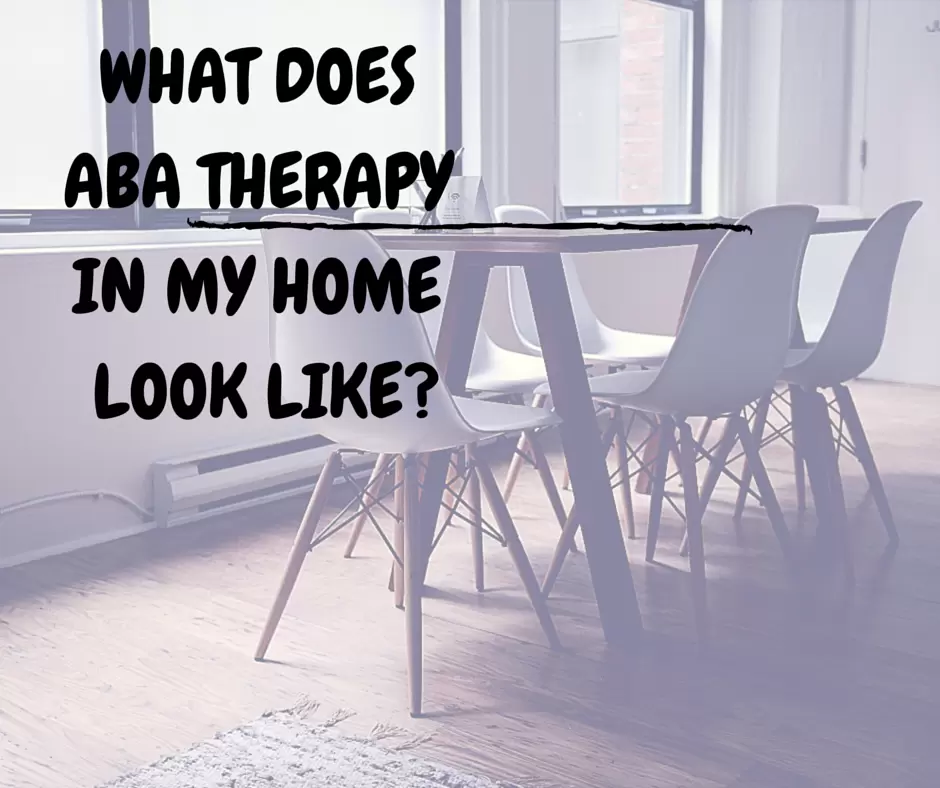Introduction
Carried out conduct evaluation (ABA) therapy has emerged as an exceptionally powerful technique for assisting the improvement of kids with autism spectrum disease (ASD) and other developmental disabilities.
Historically ABA therapy has been frequently carried out in scientific settings.
But, the growing reputation of in-home ABA therapy has unlocked a new realm of benefits for households.
In this complete blog publish we are able to explore the Top 5 benefits of in-home ABA therapy to your baby.
Whether you are a parent, caregiver or healthcare expert.
Knowledge of these key blessings permit you to make an informed choice that aligns together with your toddler’s precise needs and your family’s goals.
One-on-One Attention
One-on-One Attention blessings of in-home ABA remedy is the capacity to provide pretty personalized one-on-one attention in your infant. While therapy takes region inside the consolation of your own home. The ABA therapist can cognizance entirely of your toddler’s character desires, strengths and challenges.
This tailored approach permits the therapist to create a customized treatment plan that addresses your toddler’s unique goals and gaining knowledge of style. Getting rid of distractions and environmental elements that may be found in a medical setting. The therapist can deliver extra focused effective interventions.
“The one-on-one nature of in-domestic ABA therapy has been a game changer for our own family. Our son flourishes in the familiar secure surroundings of our home and the therapist’s undivided attention has extended his progress in ways we by no means think feasible.” Sarah, mom of a child with autism
Increased Engagement and Progress
Youngsters frequently respond higher to ABA remedy whilst it’s miles carried out of their own domestic. The acquainted surroundings and lack of strange stimuli can assist youngsters feel more relaxed leading to extended engagement and faster ability acquisition.
In-home ABA therapy permits the therapist to seamlessly integrate the techniques and interventions into your toddler’s each day exercises and activities. This herbal integration promotes better generalization of competencies as your infant can practice and practice what they have found out in actual international situations.
Research have proven that children receiving in-home ABA therapy demonstrate quicker development in areas consisting of:
- Language and communique
- Social interaction
- Adaptive living competencies
- Behavior management
Convenience and Accessibility
Transporting a toddler to and from a medical setting may be a sizable logistical and monetary burden for households. In-home ABA therapy eliminates the need for transportation, saving time, money and lowering the potential for disruptive transitions.
Families can work with the ABA therapist to develop a flexible time table that incorporates their day by day routines and commitments. This flexibility allows for greater constant and common therapy classes which can result in higher effects for the child.
Family Involvement and Collaboration
In-home ABA therapy encourages lively family involvement in the treatment process. Dad and mom and caregivers can observe the therapist’s techniques. Study the techniques and take part inside the periods. This collaboration empowers households to hold the work at home. Reinforcing the capabilities and behaviors being developed throughout therapy.
By relating to the family in-home ABA therapy strengthens the bond among the child and their cherished ones. This circle of relatives’ targeted technique supports the generalization of capabilities as the child can practice and follow what they have learned inside the comfort of their very own home.
Reduced Anxiety and Stress
The familiar home surroundings can have a significant effect on a baby’s anxiety and strain degrees at some stage in ABA therapy. Children regularly experience extra comfy, relaxed and much less crushed in their own living area. Lowering the ability for disruptive behaviors or meltdowns.
This decrease in anxiety and pressure not best advantage the child, It can also result in a greater effective enjoyment for the complete circle of relatives. With much less disruption and emotional turmoil parents and caregivers can be extra on helping their toddler’s improvement and well being.
Setting Up for success
Crafting the best area on your toddler’s therapeutic journey
A hit in-home implemented behavior analysis (ABA) therapy is based not best at the understanding of the therapist. Also on the intentional advent of a supportive and engaging surroundings. By putting in the most appropriate in-home space for ABA therapy you can empower your child to thrive and maximize the benefits of this transformative therapy
In this comprehensive guide we’re going to discover the important concerns and sensible tips for designing the proper in-home ABA therapy space. Whether you’re making ready for your baby’s first session or seeking to optimize the current setup. This text will equip you with the knowledge to create a nurturing and effective therapeutic surroundings.
Defining the Therapy Space
Step one in putting in place for fulfillment is to designate a specific place inside your own home for ABA therapy sessions. This committed space must be:
- Distraction unfastened: select a room or nook that is free from excessive noise, visible distractions and excessive traffic areas. Limit muddle and make sure the space is calm and conducive to focused getting to know.
- Nicely Lit: ensure the therapy area has adequate, herbal lights or brilliant, glare free artificial lights. Right lighting can help regulate your baby’s sensory revel in and promote attention.
- Safe and secure: the area should be childproof with any ability risks removed. Comprise relaxed seating, appropriate-sized fixtures and calming decor to assist your baby feel relaxed.
- Accessible and organized: make the space easily accessible for the ABA therapist and ensure important components and substances are well organized and inside attainable.
Sensory Considerations
Children with autism or developmental disabilities often have specific sensory wishes. Thoughtfully addressing these sensory elements can extensively enhance the effectiveness of in-home ABA therapy.
- Limit Sensory Overload: Lessen or take away sources of extra noise, bright lighting and robust smells that can be overwhelming to your child. Use gentle muted shades and textures to create a chilled surroundings.
- Incorporate Sensory equipment: Provide sensory pleasant toys, fidgets or calming items that your baby can use at some stage in therapy classes. Those gear can help adjust their sensory center and enhance recognition.
- Provide Sensory Breaks: Designate a comfortable low stimulation region within the remedy space wherein your child can take sensory breaks as needed. This can assist them regain their composure and go back to the consultation refreshed.
Personalize and Engage
Personalizing the therapy area along with your infant’s pastimes and options can foster an experience of consolation and engagement.
- Show Motivating Visuals: Contain visual aids which includes schedules, reward systems or their favored characters to assist your toddler live inspired and on track for the duration of sessions.
- Incorporate favorite gadgets: Allow your toddler to deliver cherished toys, books or different objects into the therapy area to assist them feel secure and engaged.
- Inspire Creativity: offer art elements, musical gadgets or other creative materials that align together with your toddler’s pursuits and can be used throughout remedy activities.
Collaboration and communication
Effective in-home ABA therapy flourishes on open conversation and collaboration between the own family and the therapist.
- Establish a conversation Plan: Speak with the therapist the exceptional approaches to share updates, provide remarks and coordinate ongoing guidance to your toddler’s progress.
- Involve the circle of relatives: Inspire own family individuals to take a look at and participate in therapy periods as this could decorate the generalization of competencies and promote consistent implementation of strategies.
- Maintain Flexibility: Be organized to conform to the therapy area and routines as your infant’s wishes and the therapy plan evolve over time.
Effective Progress Monitoring and Adjustments in In-Home ABA Therapy
Measuring and Tracking Your Child’s Growth
A hit in-home implemented behavior analysis (ABA) therapy is predicated closely on ongoing development tracking and information driven modifications to the therapy plan. With the aid of intently monitoring your infant’s progress and making timely changes you could make certain that the therapy remains tailor made, powerful and responsive to their particular needs.
In this guide we will discover the key principles and strategies for powerful development. Monitoring and diversifications within the context of in-home ABA therapy.
Establish Clear Goals and Objectives
The inspiration of a hit progress monitoring starts with the development of well described desires and targets to your child’s therapy. These objectives ought to be:
- Particular: without a doubt articulate the favored behaviors, abilities or developmental milestones to be completed.
- Measurable: Determine quantifiable metrics or behavioral indicators that may be located and tracked over the years.
- Plausible: Ensure the desires are within your infant’s abilities and the scope of the therapy plan.
- Applicable: Align the targets with your infant’s character needs, strengths and areas for improvement.
- Time certain: Set up practical timelines for reaching every purpose bearing in mind ongoing assessment and adjustments.
Implement Comprehensive Data Collection
Effective progress monitoring is predicated on the systematic series and analysis of facts during the in-home ABA therapy procedure. Collaborate with your toddler’s therapist to broaden a complete facts series device that includes:
- Baseline assessments: Collect complete baseline data on your infant’s modern capabilities, behaviors, and developmental ranges before the beginning of therapy.
- Ongoing facts tracking: Consistently document observations, antecedents, behaviors and consequences during therapy sessions to pick out styles and measure development.
- Standardized exams: Include periodic, standardized checks to objectively compare your infant’s increase across various domains.
- Visual Representations: Use graphs, charts or other visible aids to definitely illustrate your infant’s development through the years. Making it easier to pick out developments and areas for development.
Analyze Data and Identify Trends
Often reviewing and analyzing the information accrued in the course of therapy sessions is crucial for monitoring development. Making knowledgeable choices about modifications to the therapy plan. Paintings carefully together with your child’s therapist to:
- IIdentify styles: Observe the data to hit upon styles on your toddler’s conduct, ability acquisition and response to particular interventions.
- Recognize Strengths and challenges: Pinpoint areas of power where your baby is excelling as well as areas that can require more focused aid or changed techniques.
- Evaluate the Effectiveness of Interventions: Assess whether or not the modern day therapy strategies and techniques are generating the desired outcomes or if adjustments are wished.
Collaborate on Adjustments and Modifications
Adapting the in-home ABA therapy plan based on the gathered records is an important step in making sure persevered development and top of the line results on your child. Collaborate with the therapist to
- Revise desires and targets: Refine or adjust the therapy desires and targets to better align with your toddler’s evolving wishes and competencies.
- Adjust Interventions and techniques: Discover opportunity or supplementary therapy approaches, materials and strategies that may be more effective in addressing precise challenges or skill deficits.
- Include Generalization techniques: Develop plans to promote the generalization of newly obtained abilities across one of a kind environments and contexts.
- Regulate the therapy time table: Evaluate the frequency, length and depth of therapy periods to make sure they maintain to satisfy your toddler’s desires.
Celebrate Progress and Maintain Momentum
Recognizing and celebrating your toddler’s achievements. Regardless of how small. It is important for maintaining motivation and momentum at some point of the in-home ABA therapy adventure. Collaborate with the therapist to:
- Well known Milestones: Pick out and spotlight your infant’s development celebrating even the most incremental gains.
- Strengthen advantageous Behaviors: Utilize effective reinforcement strategies to encourage and sustain your toddler’s engagement and talent improvement.
- Preserve Open communication: Constantly share remarks, insights and successes with the therapist to ensure a collaborative and supportive surroundings.
Considerations for In-Home ABA Therapy
- Logistical preparations: Households have to recollect factors which includes the availability of a devoted therapy space inside the home. Accommodations for the therapist’s desires and any capability distractions or interruptions which can arise in the course of classes.
- Caregiver Involvement: Even as caregiver involvement is a huge gain. It additionally requires a dedication from parents or guardians to actively participate in the therapy method. Inclusive of enforcing strategies and strategies learned in the course of sessions.
- Therapy time table: Households ought to be prepared to house the therapist’s time table and make certain that the child is available and geared up for their classes. Which may also contain adjustments to the circle of relatives’s every day exercises.
- Value and insurance coverage: The cost of in-home ABA therapy can vary and families have to cautiously evaluate their insurance and recognize any out of pocket fees they may incur.
- Therapist compatibility: Families have to make the effort to find a therapist who is superb in shape for their infant and family. Considering elements inclusive of communique style, expertise and personality.
- Transition to different Settings: At the same time as in-home ABA therapy can facilitate the generalization of capabilities. Households have to also not forget strategies for transitioning the child to different environments. Which include school or network settings to make certain the ongoing development and alertness of acquired capabilities.
Continuing Progress Beyond ABA Therapy Sessions
Integrating learned competencies into daily workouts
One of the key benefits of in-home ABA therapy is the opportunity to apply the competencies and strategies found out directly in the infant’s herbal environment. Families can work carefully with the ABA therapist to identify methods to seamlessly integrate those discovered skills into the kid’s daily sports. Inclusive of:
- Incorporating communication techniques at some point of mealtime, playtime or household chores
- Practicing self care and independence abilities at some point of morning and nighttime routines
- Reinforcing social competencies and suitable behaviors at some point of own family outings or playdates
With the aid of consistently enforcing those strategies families can help the kid generalize and hold the progress accomplished at some point of therapy periods.
Empowering Caregivers and Family Members
In-home ABA therapy encourages lively caregiver involvement and households ought to take full advantage of this opportunity. Caregivers can research powerful conduct management techniques, communication strategies and pastime based methods from the ABA therapist. After which they practice those strategies in the course of the child’s daily life.
Equipping all family contributors along with siblings and a prolonged circle of relatives. With the knowledge and talents to assist the kid’s development. Can create a cohesive and supportive surroundings in addition reinforcing the progress made for the duration of therapy.
Maintaining Consistent Routines and Structure
Youngsters with ASD or developmental disabilities regularly thrive on predictability and structure. Households can paint with the ABA therapist to establish and hold regular daily workouts, visible schedules and clean expectations. Which can assist the child feel secure and keep building upon the capabilities they’ve obtained.
Frequently reviewing and adapting those exercises and structures. In collaboration with the ABA therapist they can make certain that they stay relevant and effective as the child’s desires and abilities evolve over time.
Fostering Generalization Through Varied Environments
While in-home ABA therapy affords the consolation and familiarity of the kid’s very own domestic. It’s also vital to facilitate the generalization of talents to other environments inclusive of:
- Playdates or social outings
- Faculty or community settings
- Visits to family members or buddies’ homes
Families can work with the ABA therapist to broaden techniques for progressively introducing the child to new settings. Assisting the switch of learned abilities throughout special contexts.
Ongoing Communication and Collaboration with the ABA Therapist
Keeping open and normal verbal exchange with the ABA therapist is vital for persevered progress. Households need to:
- Provide comments on the kid’s development and any challenges encountered
- Collaborate with the therapist to modify or refine intervention techniques
- Participate in determine education classes to enhance their talents and expertise
- Coordinate with the therapist to make sure a unbroken transition as the child grows and their desires alternate
Working carefully with the ABA therapist families can make sure that the momentum and profits made throughout therapy periods are sustained and constructed upon inside the baby’s regular lifestyles.
FAQ’s
What are the benefits of ABA therapy?
Increase language and communication skills
What is home based ABA?
ABA Therapy that takes place in your home.
What are the benefits of ABA design?
Establishing Causal Relationships
Is in-home ABA therapy safe?
In-home therapy can be particularly beneficial for your child with autism.
Conclusion
In-home ABA therapy offers a transformative approach to assisting the growth and development of children with autism and different developmental disabilities.
By presenting tailored one-on-one interest, growing engagement and development.
Improving convenience and accessibility. Promoting family involvement and decreasing anxiety and pressure.
In-home ABA therapy can have a profound effect on a toddler’s life and the general nice being of the circle of relatives.
As you remember the best alternatives for your baby.
We inspire you to explore the extraordinary blessings of in-home ABA therapy.
With its personalized technique and multitude of advantages.
This therapy modality can unlock new opportunities and empower your baby to reach their fullest capacity.

